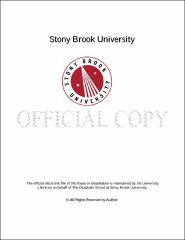| dcterms.abstract | Cancer remains the second leading cause of death in the United States, accounting for nearly a quarter of all deaths, and is exceeded only by heart disease. Traditional chemotherapy uses highly potent cytotoxic agents to kill rapidly dividing cancer cells, relying on the premise that these fast-growing cancer cells are more likely to be killed by these drugs. Despite the profound impact of traditional chemotherapy, lack of tumor-specificity continues to be a serious issue for cancer treatment. Paclitaxel and docetaxel are among the most widely used chemotherapeutic agents, in particular against cancers such as ovarian, breast, lung, and Kaposi's sarcoma; however, despite their high antitumor activity as microtubule-stabilizing agents, these drugs cause undesirable side effects as well as encounter drug resistance. Over the past decade, significant advancement has been made on the development of next-generation taxoids that circumvent these mechanisms of drug resistance and tumor-targeted drug delivery systems (TTDDSs) to selectively deliver these agents to the tumor microenvironment. Receptors for vitamins, such as those for biotin and folic acid, are overexpressed on the cell surfaces of cancer cells to maintain sufficient vitamin uptake in order to sustain their rapid cell growth and enhanced proliferation. And so, novel tumor-targeting small-molecule drug conjugates (SMDCs) using vitamins (biotin or folic acid) as tumor-targeting modules (TTMs) and next-generation taxoid SB-T-1214 as the cytotoxic agent connected through biocleavable linker systems have been designed, synthesized, and evaluated both in vitro and in vivo. Internalization studies in vitro using flow cytometry, confocal fluorescence microscopy, and cell viability assays against vitamin-receptor positive and negative cell lines exhibited excellent target-specificity of the conjugates. Furthermore, a biotin conjugate of next-generation fluorotaxoid, SB-T-12822-5, on a self-immolative disulfide linker was designed, synthesized, and used in 19F NMR studies to investigate the mechanism of linker cleavage and the factors that influence plasma stability and metabolic stability by real-time monitoring with 19F NMR. A series of biotin- and taxoid-based SMDCs was developed through a highly versatile TTDDS, consisting of 1,3,5-triazine as the key tripod splitter module, self-immolative disulfide linkers with polyethylene glycol oligomers to improve water solubility, and a propargylamino arm for the attachment of (a) camptothecin as a second cytotoxic agent (targeted combination chemotherapy), (b) folic acid as a second TTM (dual-targeting conjugate), or (c) an imaging agent (fluorescence or PET theranostics). These conjugates were evaluated against cancer cell lines known to overexpress the biotin receptor and demonstrated efficient internalization, target- specificity, and high potency. Three PET tracers were developed as companion imaging agents for SB-T-1214 and the biotin-linker-taxoid series. Rapid methylation via Stille coupling of methyl iodide provided an efficient synthetic route for a [11C]-labeled SB-T-1214. Two [18F]-labeled biotin tracers, a small- molecule diagnostic tracer and a theranostic drug conjugate, were also developed for PET imaging. | |

